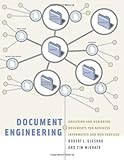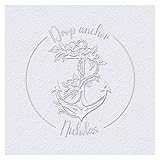All Categories


Human Interactive Proofs: Second International Workshop, HIP 2005, Bethlehem, PA, USA, May 19-20, 2005, Proceedings (Lecture Notes in Computer Science, 3517)
Share Tweet
Get it between 2025-10-24 to 2025-10-31. Additional 3 business days for provincial shipping.
*Price and Stocks may change without prior notice
*Packaging of actual item may differ from photo shown
- Electrical items MAY be 110 volts.
- 7 Day Return Policy
- All products are genuine and original
- Cash On Delivery/Cash Upon Pickup Available








About Human Interactive Proofs: Second International
E-commerce services are su?ering abuse by programs (bots, spiders, etc.) m- querading as legitimate human users. E?orts to defend against such attacks have, over the past several years, stimulated investigations into a new family of security protocols – “Human Interactive Proofs” (HIPs) – which allow a person to authenticate herself as a member of a given group: e.g., as a human (vs. a machine), as herself (vs. anyoneelse), as an adult (vs. a child). Most commercial usesofHIPstodayareCAPTCHAs,“CompletelyAutomaticPublicTuringtests to tell Computers and Humans Apart,” which exploit the gap in ability between humans and machine vision systems in reading images of text. HIP challenges can also be non-graphical, e.g., requiring recognition of speech, solving puzzles, etc. Wearepleasedtopresentthe?rstrefereedandarchivallypublishedcollection of state-of-the-art papers on HIPs and CAPTCHAs. Each paper was reviewed by three members of the Program Committee, judged by the Co-chairs to be of su?cient relevance and quality, and revised by the authors in response to the referees’ suggestions. The papers investigate performance analysis of novel CAPTCHAs, HIP - chitectures, and the role of HIPs within security systems. Kumar Chellapilla, Kevin Larson, Patrice Simard, and Mary Czerwinski describe user trials of a CAPTCHA designed to resist segmentation attacks, including a systematic evaluation of its tolerance by human users. Henry Baird, Michael Moll, and Sui- Yu Wang analyze data from a human legibility trial of another segmentati- resistantCAPTCHAandlocateahighlylegibleengineeringregime.AmaliaRusu and Venu Govindaraju describe research towards CAPTCHAs based on reading synthetically damaged images of real images of unconstrained handwritten text.




 (3)
(3)























